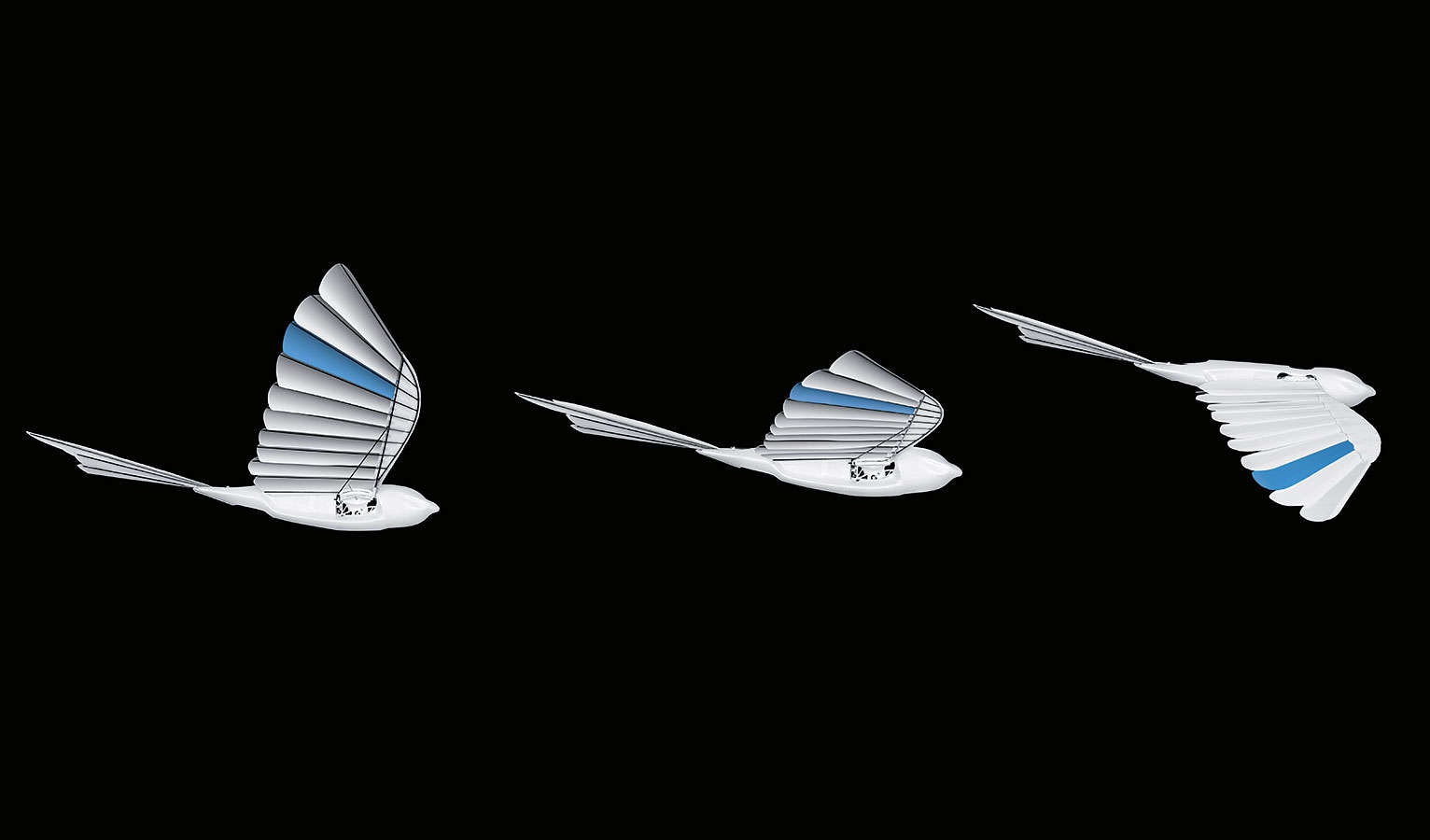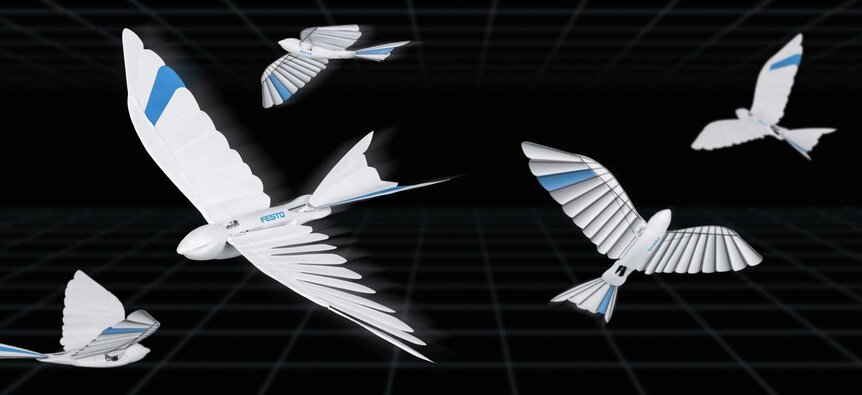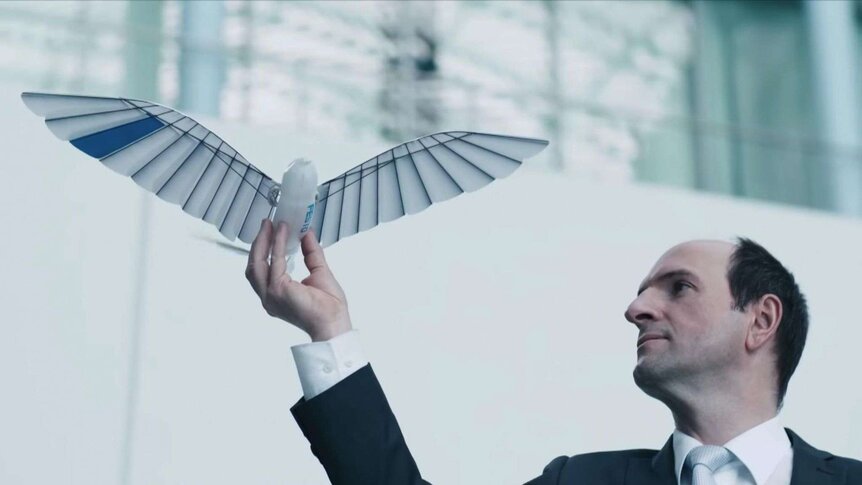Create a free profile to get unlimited access to exclusive videos, sweepstakes, and more!
This sleek flock of robotic birds is like something straight out of high-tech Hitchcock

It seems birds of a feather do flock together, but do synthetic swallows follow the same rules? Just ask this flock of robo-birds, which look like they flew out of a sci-fi remake of Alfred Hitchcock's The Birds.
Festo, a family-owned robotics and automation company headquartered in Esslingen, Germany, has hatched a nest of hi-tech, next-generation bionic birds called BionicSwifts that come fresh out of the inventive incubator full of real-world applications. These realistic robo-birds soar through the air with the greatest of ease on 26-inch wings courtesy of guidance from an ultra-sideband radio-based indoor GPS.
Festo has been dabbling in the miniaturized robotic devices market for years, and some of their earlier innovative creations include robotic jellyfish, butterflies, foxes, seagulls, and even a kangaroo.
Each of the five BionicSwift swallows are powered by a trio of miniature motors to control lift, descent, and direction. Weighing in at a mere 1.48 ounces, the team's lofty brood vastly improves on more recent robotic avian inventions by showcasing ultra-lightweight manufacturing employing artificial feathers.
Last year at the World Robot Conference in Beijing, a Chinese company called Bee-Eater Technology introduced a much larger robotic bird called a Wind Rider that was actually a high-tech drone engineered to flap its wings and glide like a real bird. But Festo's model is a smaller, more agile entity capable of multiple coordinated flight patterns.
"The intelligent interaction of motors and mechanics allows the frequency of the wing beat and the elevator's angle of attack to be precisely adjusted for the various maneuvers," explains Festo's official site report.
To achieve this level of realism and aerodynamics, artificial lamellae and quills have been used to produce realistic flight motion. As BionicSwift models take to the air, the lamellae contract to assist in providing lift.
These plumage components fan out to let airflow to pass as they smoothly glide back down to the ground, performing sharp turns and loops as they descend. Lamellae are made from flexible foam and are arranged like interlocking shingles on a roof then connected to individual carbon quills.
Festo's synthetic swallows are equipped with a tiny battery that offers seven minutes of continuous flying time, guided along a pre-programmed path via GPS sensors located inside the indoor flight zone.
To provide the juice and navigation, a brushless motor, two servomotors, battery, gearbox, and circuit boards for radio control and localization are all packed into an extremely compact space.
"The intelligent networking of flight objects and GPS routing makes for a 3-D navigation system that could be used in the networked factory of the future," Festo noted. "The precise localization of the flow of materials and goods could, for example, improve process sequences and foresee bottlenecks. Moreover, autonomous flying robots could be used to transport materials, for instance, and thus optimize the use of space within a factory with their flight corridors."
















